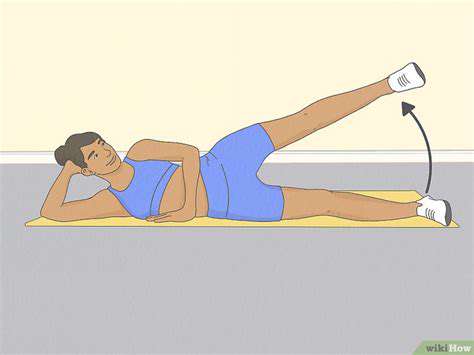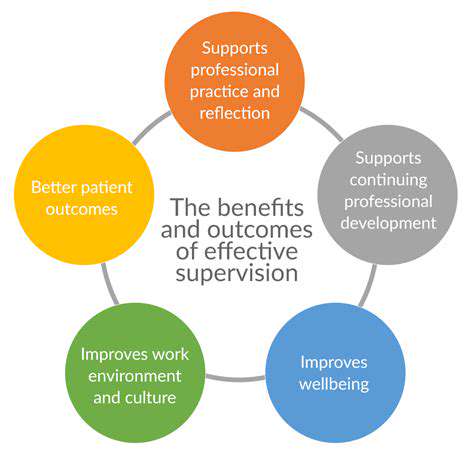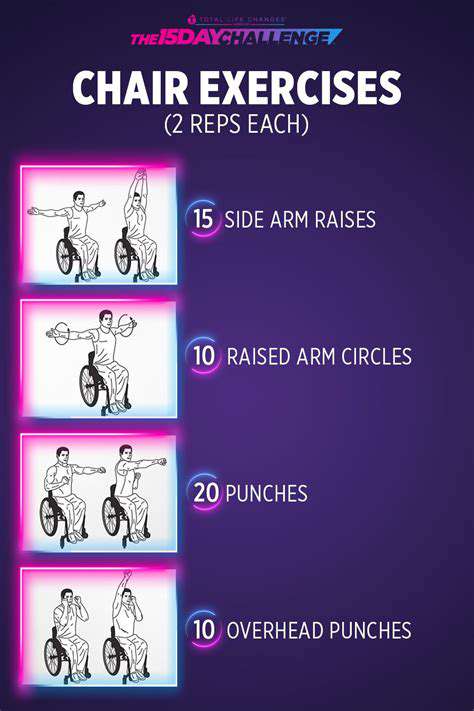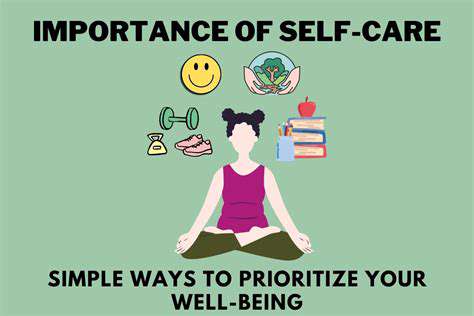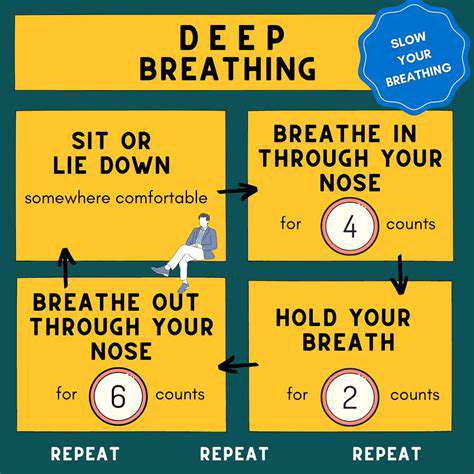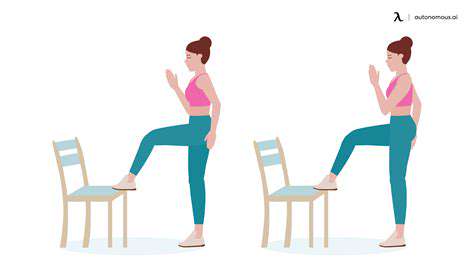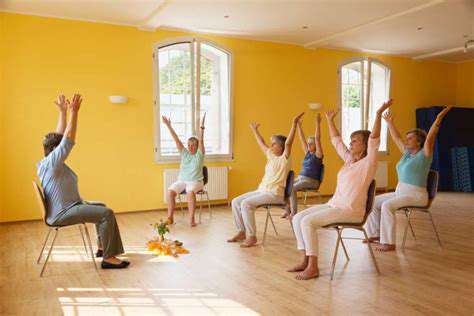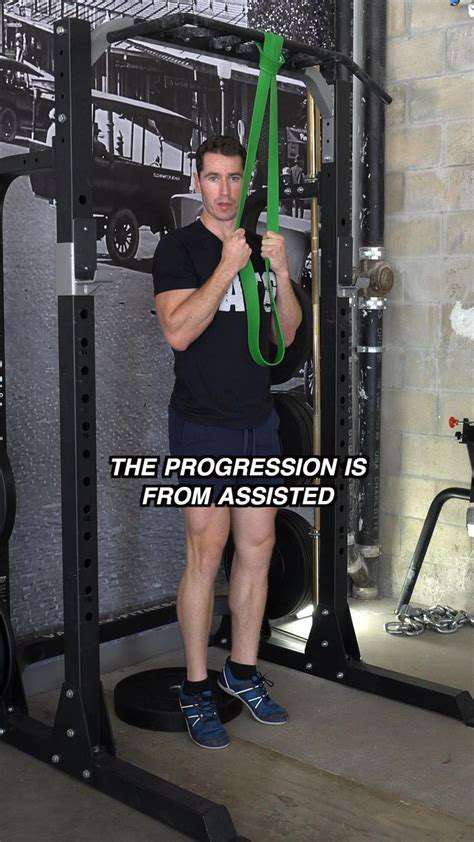What are the Best Low Impact Exercises for Seniors with Bad Knees?
Swimming is a fantastic low-impact exercise for seniors, offering a full-body workout that gently strengthens muscles without putting undue stress on joints. The buoyancy of the water supports your weight, reducing pressure on your knees, hips, and back. This makes it an ideal choice for individuals with arthritis, osteoporosis, or other joint conditions. Swimming engages a wide range of muscle groups, from your arms and legs to your core and back, improving cardiovascular health and overall fitness. The rhythmic movements also help improve balance and coordination, which are often beneficial for seniors as they age.
Beyond the physical benefits, swimming provides a relaxing and enjoyable environment. The gentle resistance of the water can be therapeutic, promoting stress relief and mental well-being. It's a great way to socialize with others in a shared activity, whether in a pool or open water. Finding a comfortable pace and style is crucial, allowing you to adjust the intensity to suit your physical capabilities. Swimming is a versatile exercise that can be adapted to various fitness levels, making it an accessible and rewarding activity for seniors of all ages and abilities.
Water Aerobics: A Fun and Engaging Workout
Water aerobics classes offer a fantastic way to stay active and improve fitness levels in a supportive and encouraging environment. The buoyancy of the water reduces the impact on joints, making it ideal for seniors with mobility issues or joint pain. These classes incorporate a variety of exercises, from gentle stretches and water walking to more dynamic movements like arm circles and leg lifts. This allows participants to build strength, endurance, and flexibility without putting excessive strain on their bodies. Water aerobics instructors are trained to modify exercises to suit individual needs and fitness levels, ensuring a safe and effective workout for everyone.
The social aspect of water aerobics classes is often a significant benefit for seniors. It provides opportunities to connect with others in a fun and stimulating environment. The shared experience of working out together fosters camaraderie and encourages continued participation. Water aerobics classes are typically held in community centers, pools, or gyms, making them accessible to many seniors in their local area. This accessibility combined with the low-impact nature of the exercises makes water aerobics a highly recommended option for maintaining fitness and well-being.
Benefits for Seniors
For seniors, swimming and water aerobics offer a multitude of benefits beyond just physical fitness. The gentle nature of these activities allows for improved balance and coordination. This is crucial as seniors age, as it helps to reduce the risk of falls and maintain independence. The buoyancy of the water also promotes improved posture and reduces stress on the spine, which is particularly beneficial for seniors who may experience back pain. These activities also foster mental well-being by reducing stress and promoting relaxation, leading to a greater sense of overall well-being.
The social interaction fostered in water aerobics classes is invaluable for seniors. Connecting with others in a shared activity can combat feelings of isolation and loneliness, which are common among older adults. The structured nature of classes provides a sense of routine and purpose, contributing to a positive and fulfilling lifestyle. These exercises are an excellent way to engage in activities that both improve physical health and enhance mental well-being for seniors.
Walking and Hiking on Level Surfaces
Walking for Cardiovascular Health
Walking on level surfaces is a fantastic low-impact exercise that significantly benefits cardiovascular health. It's a gentle yet effective way to improve blood circulation, strengthen the heart muscle, and lower blood pressure. Regular walking helps maintain a healthy weight, reducing strain on the heart and joints, and contributing to overall cardiovascular well-being. The rhythmic motion and the engagement of major muscle groups during walking are key factors in promoting cardiovascular fitness, making it a readily accessible exercise for people of all ages and fitness levels.
The benefits of walking extend beyond the cardiovascular system. It's a crucial component of a healthy lifestyle, and when performed consistently, it can contribute to a reduced risk of various health issues, such as heart disease, stroke, and type 2 diabetes. Walking on level ground is a simple, easily integrated activity that can be incorporated into daily routines, further enhancing its positive impact on long-term health.
Hiking on Level Ground: Exploring Nature
Hiking on level, well-maintained paths provides a wonderful opportunity to connect with nature. It's a great way to explore your surroundings, breathe in fresh air, and enjoy the beauty of your environment. This type of hiking, often overlooked, can be just as beneficial as hiking on more challenging terrain. The consistent pace and the ability to appreciate the sights and sounds of nature during a stroll can enhance mental well-being and stress reduction.
Choosing a level hiking route allows participants to focus on the scenery and immerse themselves in the natural world. It's an excellent option for individuals who are new to hiking or who prefer a slower, more meditative pace. The peacefulness and tranquility of a level hiking trail can be a welcome escape from the pressures of daily life, fostering a sense of calm and connection to nature.
Strengthening Legs and Core Muscles
Walking and hiking on level surfaces engage multiple muscle groups in the legs, including the quadriceps, hamstrings, and calves. These exercises contribute to the overall strength and endurance of these crucial leg muscles. The repetitive motion of walking and hiking on level ground strengthens these muscles gradually over time, which is crucial for maintaining mobility and preventing injuries. The engagement of core muscles to maintain balance and posture during these activities further strengthens the core, contributing to overall body stability and reducing the risk of back pain.
Improving Balance and Coordination
Maintaining balance and coordination is essential, especially as we age. Walking and hiking on level surfaces provide opportunities for the body to improve these crucial skills. The continuous movement and interaction with the ground during these activities help to enhance proprioception, which is the body's awareness of its position in space. This improved awareness translates to better balance and coordination, making everyday tasks easier and reducing the risk of falls.
Joint Health and Reduced Impact
Level walking and hiking are considered low-impact exercises due to the minimal stress they place on the joints, particularly the knees, hips, and ankles. This characteristic makes them ideal for individuals with joint pain or conditions like arthritis. The gentle nature of these activities helps to reduce the risk of further injury and maintain joint health. The controlled movement and the absence of jarring impacts are significant advantages for those looking for exercises that are easy on the joints.
Mental Well-being and Stress Relief
Engaging in walking or hiking on level surfaces can be a powerful tool for improving mental well-being and reducing stress. The rhythmic motion and the connection with nature can help to calm the mind and promote relaxation. Stepping out into the fresh air, taking in the sights and sounds of the environment, and focusing on the present moment can significantly decrease stress and improve mood. These activities can foster a sense of peace and tranquility, contributing to overall mental and emotional well-being.
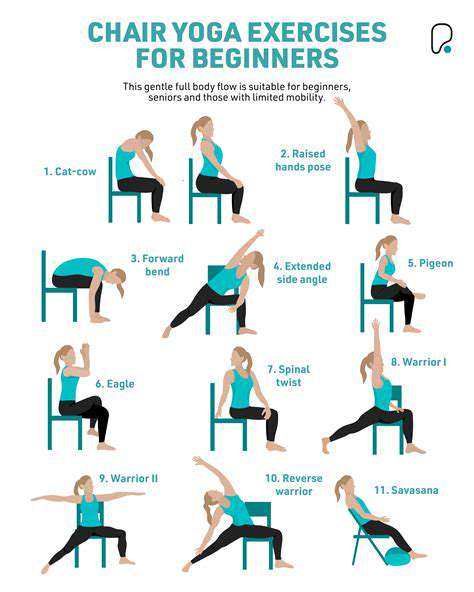
Important Considerations for Exercise Selection
Choosing Exercises Based on Your Fitness Level
Understanding your current fitness level is crucial when selecting low-impact exercises. Beginners should prioritize exercises that are gentle on the joints and promote gradual improvement in cardiovascular health and strength. These might include walking, swimming, or stationary cycling. Gradually increasing the intensity and duration of these activities is key to building a sustainable exercise routine. Proper form is paramount to avoid injury and maximize the benefits of the chosen exercises. Consulting with a healthcare professional or certified fitness trainer can provide personalized guidance tailored to your specific needs and limitations.
For individuals with more experience, low-impact exercises can still be valuable for maintaining fitness or introducing variety. Consider options like elliptical training, light jogging on a soft surface, or water aerobics to challenge different muscle groups and elevate the heart rate. Remember to listen to your body and adjust the intensity as needed to avoid pushing yourself too hard, which could lead to injury. Progressive overload, gradually increasing the challenge, is key to continued improvement and fitness gains.
Joint Health and Exercise Selection
Low-impact exercises are designed to minimize stress on the joints, crucial for individuals with joint pain, arthritis, or previous injuries. Choosing exercises that don't put excessive pressure on the knees, hips, or ankles is essential to prevent further pain or exacerbation of existing conditions. Examples include swimming, cycling, and using an elliptical machine. Careful attention to proper form and posture is equally important to protect the joints throughout the exercise.
Cardiovascular Benefits of Low-Impact Exercises
Many low-impact exercises are excellent for cardiovascular health. Activities like brisk walking, water aerobics, and stationary cycling elevate the heart rate, improving blood circulation and strengthening the heart muscle. These exercises can help lower blood pressure and cholesterol levels, reducing the risk of heart disease and stroke. Consistency in engaging in these activities is key to realizing the full cardiovascular benefits.
Muscle Strengthening Without High Impact
While often associated with high-impact activities, low-impact exercises can also contribute to muscle strengthening. Exercises like resistance band workouts, chair squats, and wall push-ups can effectively build strength and tone muscles without putting undue stress on joints. These exercises can be adapted to various fitness levels, making them suitable for beginners and experienced individuals alike.
Considering Equipment and Accessibility
The availability and accessibility of equipment can influence exercise selection. Low-impact exercises like walking, swimming, and cycling often require minimal equipment, making them readily available and convenient. However, some low-impact exercises may require specific equipment, such as resistance bands or specialized fitness machines. When considering equipment, factor in the cost and ease of access to ensure you can sustain your exercise program.
Environmental Considerations for Exercise
The environment in which you exercise can also play a role in your chosen low-impact activities. Outdoor options like walking in a park or jogging on a soft trail provide fresh air and scenery. Indoor options, like using a stationary bike or participating in water aerobics, offer controlled environments that can be beneficial for certain weather conditions. Choose an environment that motivates and supports your exercise routine.
Proper Warm-up and Cool-down for Low-Impact Activities
A thorough warm-up and cool-down are essential components of any exercise routine, particularly for low-impact activities. A warm-up prepares the muscles for the workout, reducing the risk of injury, and improving blood flow. A cool-down allows the body to gradually return to a resting state, helping to prevent muscle soreness and stiffness. Incorporating these crucial steps into your routine can significantly enhance the effectiveness and safety of your low-impact exercise program.
